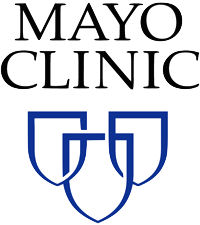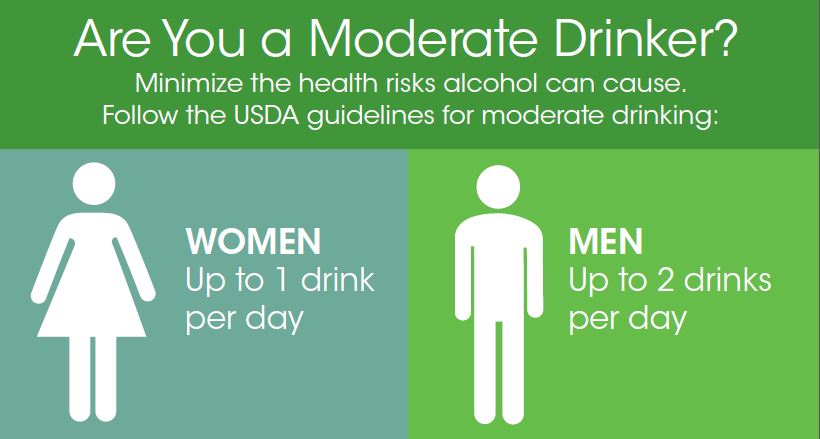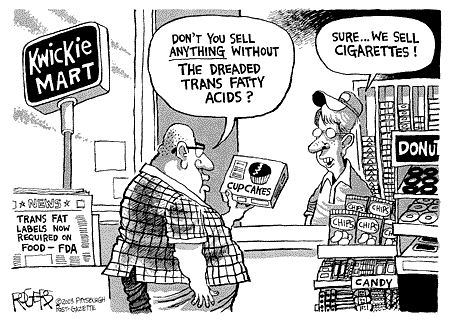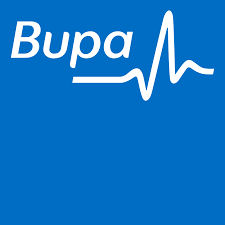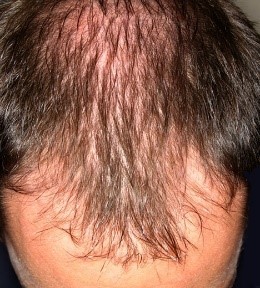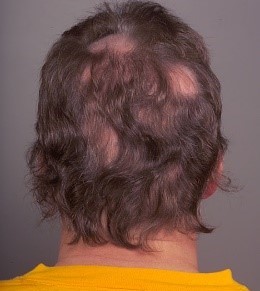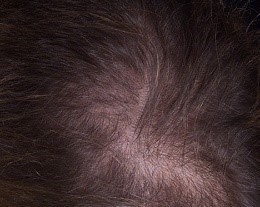|
|
||||||||||
|
||||||||||
|
Privacy Policy | Editorial Policy | Profit Policy | Join the Association | List of Members | Contact us | Index | Links |
||||||||||
|
Back Go to page: 1 2 3 4 5 6 7 8 9 10 11 12 13 14 15 16 17 18 19 20 Forward
|
||||||||||
|
Health and Life Style. |
||||||||||
| Veterans and Veterans Families Counselling Service (VVCS) can be reached 24 hours a day across Australia for crisis support and free and confidential counselling. Phone 1800 011 046. VVCS is a service founded by Vietnam Veterans. |
||||||||||
|
Alcohol: If you drink, keep it moderate.
Moderate alcohol use has possible health benefits, but it's not risk-free.
It sounds like a mixed message: Drinking alcohol may offer some health benefits, especially for your heart yet on the other hand, too much alcohol may increase your risk of health problems and damage your heart.
When it comes to alcohol, the key is definitely moderation. Certainly, you don't have to drink any alcohol and if you currently don't drink, don't start drinking for the possible health benefits. In some cases, it's safest to avoid alcohol entirely — in no way do the possible benefits outweigh the risks.
Here's a closer look at the connection between alcohol and your health.
Moderate alcohol consumption may provide some health benefits,
such as:
Even so, the evidence about the health benefits of alcohol isn't certain, and alcohol may not benefit everyone who drinks.
Guidelines for moderate alcohol use
Moderate alcohol use for healthy adults means up to one drink a day for women of all ages and men older than age 65, and up to two drinks a day for men age 65 and younger.
Examples of one drink include:
Moderate alcohol use may be of most benefit if you have existing risk factors for heart disease, however, you can take other steps to improve your heart health besides drinking — eating a healthy diet and exercising, for example, which have more robust research behind them.
Keep in mind that even moderate use isn't risk-free. For example, drinking and driving is never a good idea.
|
||||||||||
|
An elderly man went to his doctor and said, 'Doc, I think I'm getting senile. Several times lately, I have forgotten to zip up.' 'That's not senility,' replied the doctor. 'Senility is when you forget to zip down.
|
||||||||||
|
Do natural aphrodisiacs actually work?
There's little evidence to support the effectiveness of most substances thought of as natural aphrodisiacs.
Although certain foods and supplements — such as chocolate, spicy food, oysters and strawberries are sometimes claimed to affect libido, research has shown them to be largely ineffective at producing a sexual response in either men or women. Some preliminary evidence is slightly more encouraging for a few natural supplements, such as ginkgo, ginseng and maca, but more research is needed.
While there's no harm in experimenting with most foods to see if they're effective natural aphrodisiacs, be aware that some supplements containing insect or plant extracts can be toxic. For example, Spanish fly, a commonly touted natural aphrodisiac, can cause kidney damage and gastrointestinal bleeding. Certain products marketed as natural aphrodisiacs have also been found to contain prescription drug ingredients such as sildenafil, the active ingredient in the erectile dysfunction drug Viagra. These ingredients can be dangerous if you have certain medical conditions or you're taking particular medications.
If you're looking for an effective way to increase your sexual desire, consult your doctor. He or she may suggest proven strategies for enhancing sexual health, such as communicating with your partner, making healthy lifestyle choices and treating any underlying medical conditions. It may also help to consult a counsellor or therapist who specializes in sexual concerns and relationship issues.
|
||||||||||
|
A newly married man asked his wife, 'Would you have married me if my father hadn't left me a fortune?' ' Honey,' the woman replied sweetly, 'I'd have married you, no matter who left you a fortune!
|
||||||||||
|
Trans fat is double trouble for your heart health.
Trans fat raises your LDL ("bad") cholesterol and lowers your HDL ("good") cholesterol.
Trans fat is considered by many doctors to be the worst type of fat you can eat. Unlike other dietary fats, trans fat, also called trans-fatty acids, both raises your LDL ("bad") cholesterol and lowers your HDL ("good") cholesterol.
A diet laden with trans fat increases your risk of heart disease, the leading killer of men and women. Here's some information about trans fat and how to avoid it.
What is trans fat? Some meat and dairy products contain small amounts of naturally occurring trans fat, but most trans fat is formed through an industrial process that adds hydrogen to vegetable oil, which causes the oil to become solid at room temperature. This partially hydrogenated oil is less likely to spoil, so foods made with it have a longer shelf life. Some restaurants use partially hydrogenated vegetable oil in their deep fryers, because it doesn't have to be changed as often as do other oils.
Trans fat in your food. The manufactured form of trans fat, known as partially hydrogenated oil, is found in a variety of food products, including:
Reading food labels. In Australia, manufacturers are not required to declare TFAs on the label, although they can provide this information voluntarily. However, TFAs must be declared on a label if the manufacturer makes a nutrition content claim about cholesterol or saturated, trans, polyunsaturated, monounsaturated, omega-3, omega-6 or omega-9 fatty acids.
How low should you go? Trans fat, particularly the manufactured variety found in partially hydrogenated vegetable oil, appears to have no known health benefit. Experts recommend keeping your intake of trans fat as low as possible. Monitoring of TFAs in the Australian and New Zealand food supply has found that Australians obtain on average 0.5 per cent of their daily energy intake from TFAs and New Zealanders on average 0.6 per cent. This is well below the WHO recommendation of no more than 1 per cent. It is also below the levels in many other countries. However, the monitoring study also found that intakes of saturated fatty acids are higher than recommended for the Australian and New Zealand populations
How trans fat harms you: Doctors worry about trans fat because it increases the risk for heart attacks, stroke and type 2 diabetes. Trans fat also has an unhealthy effect on your cholesterol levels — increasing your LDL and decreasing your HDL cholesterol. There are two main types of cholesterol:
If the fatty deposits within your arteries tear or rupture, a blood clot may form and block blood flow to a part of your heart, causing a heart attack, or to a part of your brain, causing a stroke.
What should you eat? Foods free of trans fats aren't automatically good for you. Food manufacturers may have substituted other ingredients for trans fat that may not be healthy either. Some of these ingredients, such as tropical oils — coconut, palm kernel and palm oils — contain a lot of saturated fat.
Saturated fat raises your total cholesterol. In a healthy diet, 20 to 35 percent of your total daily calories can come from fat, but saturated fat should account for less than 10 percent of your total daily calories.
Monounsaturated fat, found in olive, peanut and canola oils, is a healthier option than is saturated fat. Nuts, fish and other foods containing unsaturated omega-3 fatty acids are other good choices of foods with healthy fats.
|
||||||||||
|
A man was sitting reading his paper when his wife hit him round the head with a frying pan. 'What was that for?' the man asked. The wife replied, 'That was for the piece of paper with the name Jenny on it that I found in your pants pocket'. The man then said 'When I was at the races last week, Jenny was the name of the horse I bet on.' The wife apologized and went on with the housework. Three days later the man is watching TV when his wife bashes him on the head with an even bigger frying pan, knocking him unconscious. Upon re-gaining consciousness, the man asked why she had hit again. Wife replied. 'Your horse phoned'
|
||||||||||
|
What is a stroke?
A stroke occurs when there's bleeding into your brain or when blood flow to your brain is blocked. Blood is carried to the brain by blood vessels called arteries. Blood contains oxygen and important nutrients for your brain cells. Blood may be interrupted or stop moving through an artery, because the artery is blocked (ischaemic stroke) or bursts (haemorrhagic stroke). When brain cells do not get enough oxygen or nutrients, they die. The area of brain damage is called a cerebral infarct. If you are in the vicinity of someone who is showing indications of a stroke, don’t delay, seek immediate medical assistance. A stroke is a true emergency. The sooner treatment is given, the more likely it is that damage can be minimized. Every moment counts. |
||||||||||
|
|
||||||||||
|
In the event of a possible stroke, use F.A.S.T. to help remember warning signs:
Other signs and symptoms of a stroke, which come on suddenly, include:
Risk factors for stroke include having high blood pressure, having had a previous stroke, smoking, having diabetes and having heart disease. Your risk of stroke increases as you age.
The signs of stroke may occur alone or in combination and they can last a few seconds or up to 24 hours and then disappear. When symptoms disappear within 24 hours, this episode may be a mini stroke or Transient Ischaemic Attack (TIA). If you or someone else experiences the signs of stroke, no matter how long they last, call 000 immediately.
What is your stroke risk? The Stroke Foundation has a web site where you can answer a few questions and find your stroke risk, see HERE.
|
||||||||||
|
A father buys a lie detector robot that slaps people when they lie. He decides to test it out at dinner one night. The father asks his son what he did that afternoon. The son says, "I did some schoolwork." The robot slaps the son. The son says, "Ok, Ok. I was at a friend's house watching movies." Dad asks, "What movie did you watch?" Son says, "Toy Story." The robot slaps the son. Son says, "Ok, Ok, we were watching porn." Dad says, "What? At your age I didn't even know what porn was." The robot slaps the father. Mom laughs and says, "Well, he certainly is your son." The robot slaps the mother.
Robot for sale!
|
||||||||||
|
Can chocolate be good for my health?
Healthy chocolate sounds like a dream come true, but chocolate hasn't gained the status of health food quite yet. Still, chocolate's reputation is on the rise, as a growing number of studies suggest that it can be a heart-healthy choice.
Chocolate and its main ingredient, cocoa, appear to reduce risk factors for heart disease. Flavanols in cocoa beans have antioxidant effects that reduce cell damage implicated in heart disease. Flavanols, which are more prevalent in dark chocolate than in milk chocolate, also help lower blood pressure and improve vascular function.
In addition, some research has linked chocolate consumption to reduced risks of diabetes, stroke and heart attack. But more research is needed to confirm these results.
In the meantime, if you want to add chocolate to your diet, do so in moderation. Why? Most commercial chocolate has ingredients that add fat, sugar and calories. And too much can contribute to weight gain, a risk factor for high blood pressure, heart disease and diabetes.
On the other hand, cocoa itself, unlike chocolate, is low in sugar and fat while offering potential health benefits. If you enjoy chocolate flavour, add plain cocoa to your low-fat milk or morning oats.
|
||||||||||
|
I’ve been to a lot of places, but I’ve never been in Cahoots. Apparently you can ‘t go alone, you have to be in Cahoots with someone. I’ve also never been in Cognito either. I hear no-one recognises you there. I have however, been in Sane. You can’t fly there, you have to be driven there. I’ve made several trips. |
||||||||||
|
|
||||||||||
|
Slow or fast weight loss?
Why do doctors recommend a slow rate of weight loss? What's wrong with fast weight loss?
The concern with fast weight loss is that it usually takes extraordinary efforts in diet and exercise, efforts that could be unhealthy and that you probably can't maintain as permanent lifestyle changes. A weight loss of one half to one kg a week is the typical recommendation. Although that may seem like a slow pace for weight loss, it's more likely to help you maintain your weight loss for the long term.
Remember that one kg of fat contains 7,000 calories. So, to lose one kg a week, you need to burn 1,000 more calories than you eat each day. Also, if you lose a lot of weight very quickly, you may not lose as much fat as you would with a more modest rate of weight loss. Instead, you might lose water weight or even lean tissue, since it's hard to burn that many fat calories in a short period.
In some situations, however, faster weight loss can be safe if it's done the right way. For example, doctors might prescribe very low calorie diets for rapid weight loss if obesity is causing serious health problems. But an extreme diet such as this requires medical supervision. In addition, it can be difficult to keep this weight off.
Some diets include an initiation phase to help you jump-start your weight loss. For example, the Mayo Clinic Diet has a quick-start phase in which you might lose 3 to 5 Kg in the first two weeks. You can lose weight quickly with an approach like this because it combines many healthy and safe strategies at once, no gimmicks or extreme dieting.
After the initial two-week period, you transition into the recommended weight loss of up to one Kg a week, which gives you time to adopt the necessary lifestyle changes, such as eating a healthy diet and increasing your physical activity, necessary for maintaining weight loss over the long term.
|
||||||||||
|
Paddy and Murphy are working on a building site. Paddy says to Murphy "I'm gonna have the day off. I'm gonna pretend I'm mad!" He climbs up the rafters, hangs upside down and shouts "I'm a light bulb! .. I'm a light bulb!" Murphy watches in amazement! The Foreman shouts "Paddy you're mad, go home" So he leaves the site. Murphy starts packing his kit up to leave as well. "Where the hell are you going?" asks the Foreman. "I can't work in the friggin' dark!" says Murphy.
|
||||||||||
|
Which spread is better for my heart — butter or margarine?
Margarine usually tops butter when it comes to heart health. Margarine is made from vegetable oils, so it contains unsaturated "good" fats — polyunsaturated and monounsaturated fats. These types of fats help reduce low-density lipoprotein (LDL), or "bad," cholesterol when substituted for saturated fat.
Butter, on the other hand, is made from animal fat, so it contains more saturated fat.
But not all margarines are created equal, some margarines contain trans fat. In general, the more solid the margarine, the more trans fat it contains. Trans fat, like saturated fat, increases blood cholesterol levels and the risk of heart disease. In addition, trans fat lowers high-density lipoprotein (HDL), or "good," cholesterol levels.
Look for a spread that doesn't have trans fats and has the least amount of saturated fat. When comparing spreads, be sure to read the Nutrition Facts panel and check the grams of saturated fat and trans fat. Limit the amount you use to limit the calories. If you have high cholesterol, check with your doctor about using spreads that are fortified with plant stanols and sterols, such as Benecol and Promise Activ, which may help reduce cholesterol levels.
Foodswitch.
If you’re a person who watches what you eat, there is an excellent free to download and use App that you get for your iPhone or Android mobile phone which will show you which packaged food is good or bad for you.
You’re at your local supermarket. The many brand choices of packaged food can be overwhelming, and these products are often surprisingly high in salt, added sugar, saturated fat and kilojoules. So how can you decide what to put in your basket and make healthier choices for you and your family?
The free FoodSwitch app, developed by Bupa and The George Institute, can help you find out what is in the food you’re eating and suggest simple, healthier switches for you and your family. Get immediate, easy-to-understand information about packaged food products as well as a list of similar foods that are healthier choices.
All you do is open Foodswitch, this starts up your camera, you then aim the lens at the product's bar code bingo you get a report on the product.
Each product you see in FoodSwitch has been rated using either a colour-coded ‘traffic-light’ labelling system or the new Health Star Rating system. It’s easy to see at a glance how healthy a food is! You can then save this information to a healthier shopping list and share with friends and family.
You can see more info HERE and you can download the free App from the App Store or from the Google Play Store.
Hair Loss.
Overview. Hair loss can affect just your scalp or your entire body. It can be the result of heredity, hormonal changes, medical conditions or medications. Anyone can experience hair loss, but it's more common in men.
Baldness typically refers to excessive hair loss from your scalp. Hereditary hair loss with age is the most common cause of baldness. Some people prefer to let their hair loss run its course untreated and unhidden. Others may cover it up with hairstyles, makeup, hats or scarves. And still others choose one of the treatments available to prevent further hair loss and to restore growth.
Before pursuing hair loss treatment, talk with your doctor about the cause of your hair loss and treatment options.
Symptoms
Hair loss can appear in many different ways, depending on what's causing it. It can come on suddenly or gradually and affect just your scalp or your whole body. Some types of hair loss are temporary, and others are permanent.
Signs and symptoms of hair loss may include:
|
||||||||||
|
||||||||||
|
Hair loss can appear in many different ways, depending on what's causing it. It can come on suddenly or gradually and affect just your scalp or your whole body. Some types of hair loss are temporary, and others are permanent.
Signs and symptoms of hair loss may include: Gradual thinning on top of head. This is the most common type of hair loss, affecting both men and women as they age. In men, hair often begins to recede from the forehead in a line that resembles the letter M. Women typically retain the hairline on the forehead but have a broadening of the part in their hair.
Circular or patchy bald spots. Some people experience smooth, coin-sized bald spots. This type of hair loss usually affects just the scalp, but it sometimes also occurs in beards or eyebrows. In some cases, your skin may become itchy or painful before the hair falls out.
Sudden loosening of hair. A physical or emotional shock can cause hair to loosen. Handfuls of hair may come out when combing or washing your hair or even after gentle tugging. This type of hair loss usually causes overall hair thinning and not bald patches.
Full-body hair loss. Some conditions and medical treatments, such as chemotherapy for cancer, can result in the loss of hair all over your body. The hair usually grows back.
Patches of scaling that spread over the scalp. This is a sign of ringworm. It may be accompanied by broken hair, redness, swelling and, at times, oozing.
When to see a doctor See your doctor if your child or you are distressed by hair loss and want to pursue treatment. Also talk to your doctor if you notice sudden or patchy hair loss or more than usual hair loss when combing or washing your or your child's hair. Sudden hair loss can signal an underlying medical condition that requires treatment.
Causes.
People typically lose about 100 hairs a day. This usually doesn't cause noticeable thinning of scalp hair because new hair is growing in at the same time. Hair loss occurs when this cycle of hair growth and shedding is disrupted or when the hair follicle is destroyed and replaced with scar tissue.
Hair loss is typically related to one or more of the following factors:
Family history (heredity). The most common cause of hair loss is a hereditary condition called male-pattern baldness or female-pattern baldness. It usually occurs gradually with aging and in predictable patterns — a receding hairline and bald spots in men and thinning hair in women.
Hormonal changes and medical conditions. A variety of conditions can cause permanent or temporary hair loss, including hormonal changes due to pregnancy, childbirth, menopause and thyroid problems. Medical conditions include alopecia areata, which causes patchy hair loss, scalp infections such as ringworm and a hair-pulling disorder called trichotillomania.
Medications and supplements. Hair loss can be a side effect of certain drugs, such as those used for cancer, arthritis, depression, heart problems, gout and high blood pressure.
Radiation therapy to the head. The hair may not grow back the same as it was before.
A very stressful event. Many people experience a general thinning of hair several months after a physical or emotional shock. This type of hair loss is temporary.
Certain hairstyles and treatments. Excessive hairstyling or hairstyles that pull your hair tight, such as pigtails or cornrows, can cause a type of hair loss called traction alopecia. Hot oil hair treatments and permanents can cause inflammation of hair follicles that leads to hair loss. If scarring occurs, hair loss could be permanent.
Risk factors.
A number of factors can increase your risk of hair loss, including:
Prevention.
Most baldness is caused by genetics (male-pattern baldness and female-pattern baldness). This type of hair loss is not preventable.
These tips may help you avoid preventable types of hair loss:
|
||||||||||
|
|
||||||||||
|
|
||||||||||
|
|
||||||||||
|
|
||||||||||
|
|
||||||||||
|
|
||||||||||
|
|


